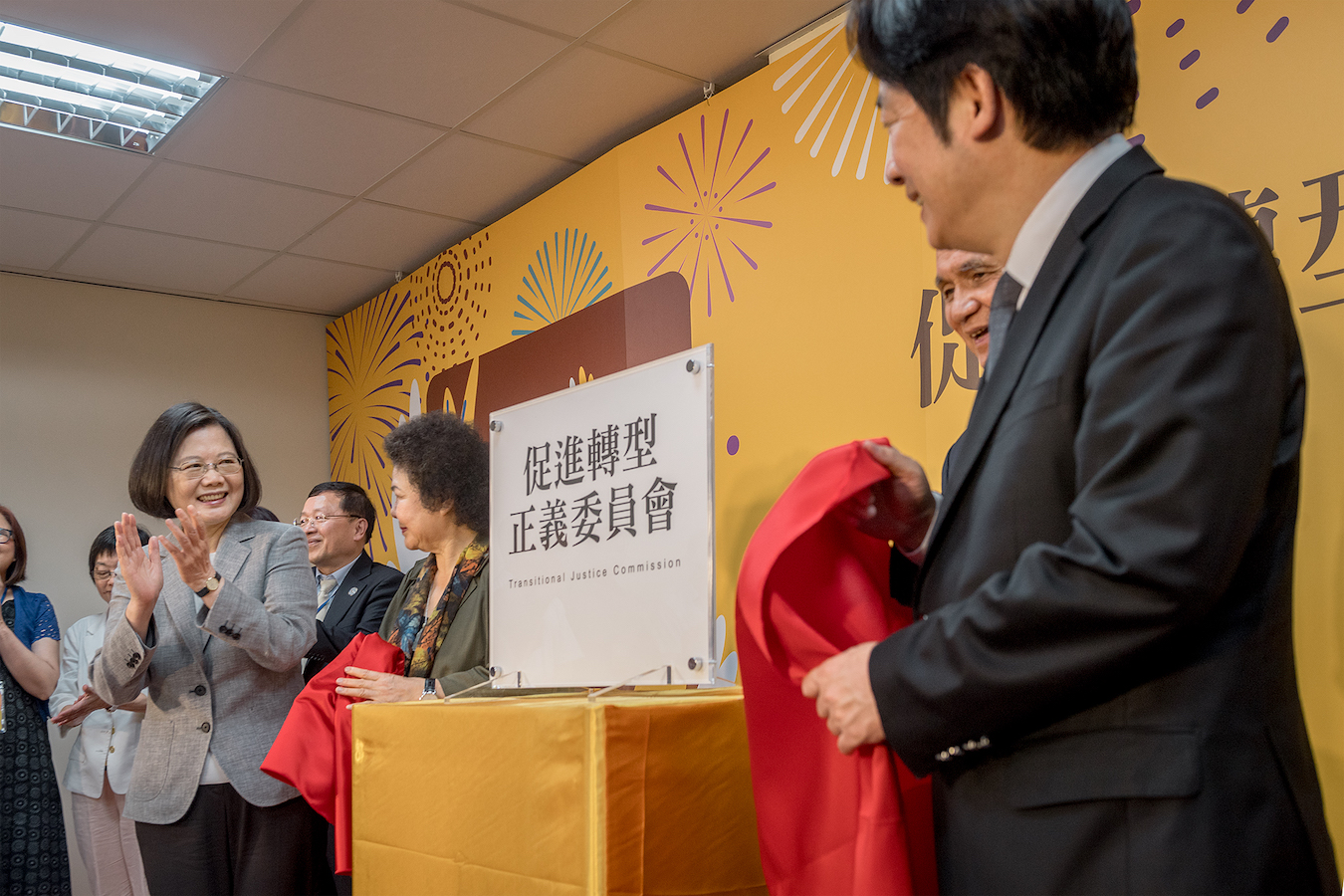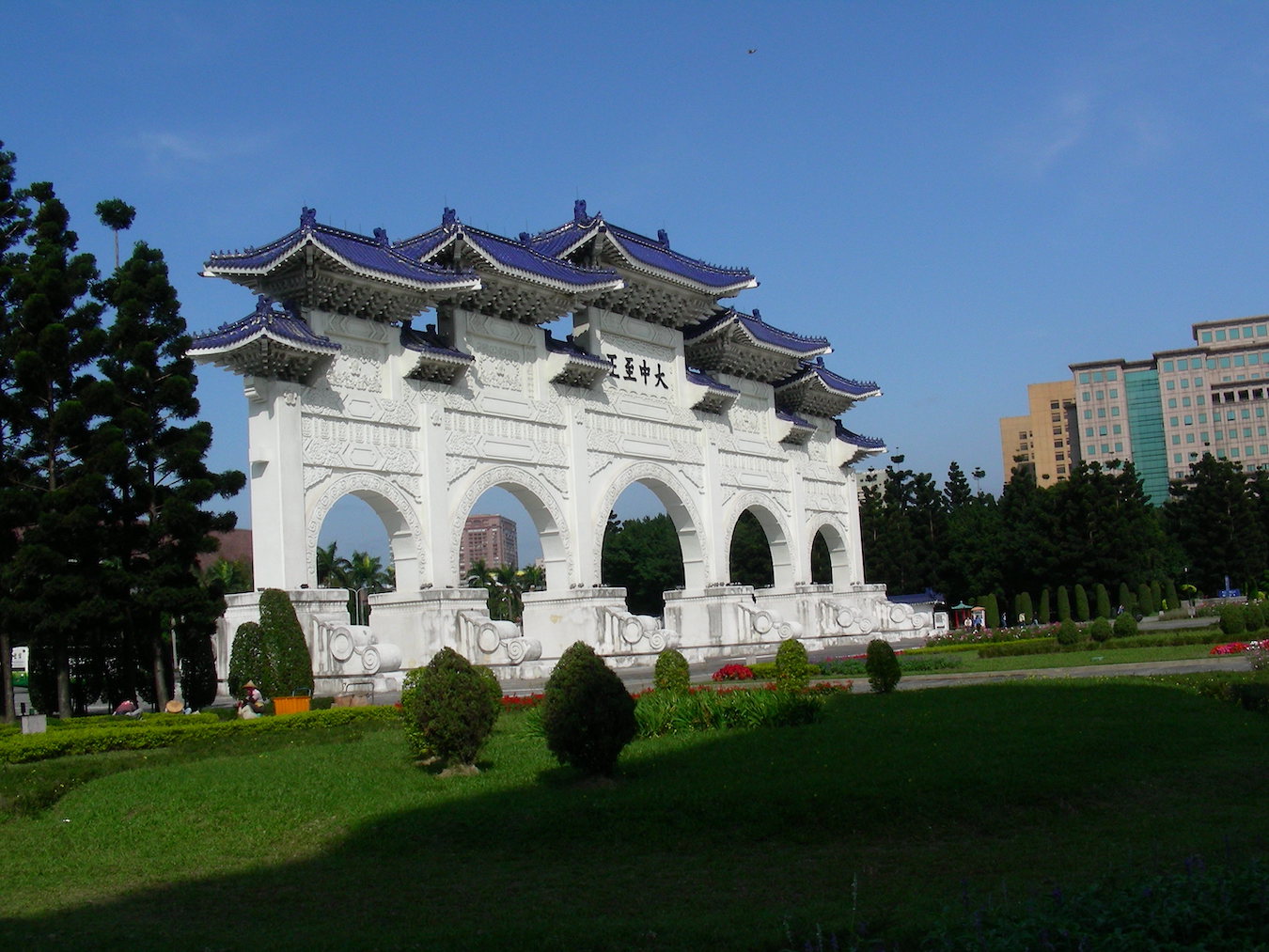by Lwazi Bululu
語言:
English
Photo Credit: Ma Jien-kuo/Public Domain
MIDTERM ELECTIONS are around the corner and there has been a plethora of ballot box issues to choose from that will prove decisive in key races: from Indigenous issues, incumbents’ COVID response, alleged corruption, and so on. But one issue that is not going to feature at all will be that of transformative justice and the unresolved issue of the biggest symbol of authoritarianism: the bronze statue of Chiang Kai-Shek at the Chiang Kai-Shek Memorial. Which begs the question of the purpose of political iconoclasm, or image breaking, as a form of performative democracy.
When, for the first time, the pan-Green movement occupied the majority in the legislature—the DPP winning 68 out of 113 seats in the Legislative Yuan and the NPP winning 5—the issue was high on the agenda. The DPP first passed the contentious 2016 Act Governing the Handling of Illicit Assets of Political Parties. This bill established a committee responsible for the investigation and possible seizure of assets acquired by the KMT during the martial law period; the rationale behind the Bill was that it offered a leveling of the political playing field, thereby entrenching multi-party democracy. Nevertheless, as one would expect, the implementation of this bill was marred with partisanship and antagonistic party politics, demonstrating how transitional justice (the intent notwithstanding) can lead to self-serving political outcomes. The following year the Executive Yuan passed the Act on Promoting Transitional Justice, which established the Transitional Justice Committee. Four years after the Transitional Justice Commission was formed–six months after its dissolution and the deliverance of its final report–the issue has lost traction.
 The unveiling of the Transitional Justice Commission in May 2018. Photo credit: Presidential Office/Flickr/CC BY 2.0
The unveiling of the Transitional Justice Commission in May 2018. Photo credit: Presidential Office/Flickr/CC BY 2.0
So what did the process of transitional justice mean for Taiwan? Well, it is worth mentioning the Commission had some concrete outcomes in terms of offering redress of injustice during martial law and removing authoritarian symbols. Over 5,000 cases resulted in exonerations by the Commission, case documents were declassified (including reports by the Commission on the Lin family massacre and the killing of Chen Wen-Chen), and 70% of symbols of authoritarianism (including Chiang Kai-Shek statues) were removed. But there is no emphasis by any parties involved in the commission on these achievements in a bid to gain support. Probably because while issues of transformative justice can be a blue flame in a political context, they often die out pretty quickly–in other words, they are great for mobilizing passionate support in the short run, but not in the long run.
The removal of statues in particular was an oft-debated and highly contentious issue. But Taiwan is not alone in this. In fact, the concept of “Fallism”, the destruction of old symbols and creation of new knowledge and memory, can be seen around the globe from South Africa (the Rhodes Must Fall Movement) to the United States (contentions regarding Confederate statues). These movements often serve as symbolic focal points for larger issues: in the former, the real issue was decolonizing education; and the former is about redress for the continued systematic racism in the United States. Yet there is the other side, which argues against the erasure of history for the sake of what it sees as performative justice. Whether these acts end up being just performative or constitute steps toward the attainment of the larger issues for which they serve as the symbolic focal point ultimately lies in whether the political iconoclasm can be taken outside of a political context. In the Taiwanese case, this did not happen. As a result, the movement petered out.
Speaking with university students from National Taiwan University, they shared that, for them, the removal of Chiang Kai-Shek statues specifically was not an important facet of healing from the era of authoritarianism. All of them, it must be stressed, understood, and supported the importance of addressing the history of authoritarianism, finding truth, and offering justice. But they did not feel passionately about the statues. In fact, they felt it was used as a weapon by political parties. Some pointed to how the campaign for Transitional Justice in Taiwan left out those who are arguably most impacted by the martial law period and Chiang Kai-Shek’s settling of Taiwan: the indigenous peoples of the island. The fact that the campaign excluded this group, under the pretense that this constitutes “historical justice,” demonstrates the role of image breaking as a form of transitional justice and progressing democracy. Image earns political capital, through the demonstration of the potential of a party/organization/individual to change the physical landscape of a country, without much political risk. It is a revolutionary act; it is a democratic act. But the hard work of transitional justice risks political capital and does not earn it. It is about reliving pain for the sake of truth. The students I spoke to understood the difference, and thus felt ambivalent about the issue of the statues.
Though this was a small group of students who will not be old enough to cast a ballot in these upcoming elections, it reveals the other side of “Fallist” movements. While it may seem a passionately fought-for issue by its respective supporters and opposition, the reality of its impact on everyday lives is that it is limited. Yet there is still the idea that fallism is a productive means to grow a passionate support base. Why?
Collective Memory
A PLACE TO start is collective memory. Collective remembering, in some way shape, or form, instructs national identity. The “self” of a nation is sustained by memory and remembering of a nation’s past. Thus, one’s identification with a nation depends upon whether one is able to assume into their personal history the narrative of national history produced by collective memory. This is also a dynamic process, with the meaning of events altered and details emphasized or downplayed in turn.
Perhaps the most visible arena in which the dynamics of collective memory play out is in public monuments. These are the symbols with which we imbue the significance of particular events in history—the chapter titles of the chronicle of collective memory and history. The subject that the monument represents is worthy of being immortalized and glorified. And since no history is without its fair share of tragedy and tyranny, a lot of monuments, with the passing of time, come to represent “the worst” that was done to achieve “the best.” As a result, commemorative dates, names, and statues which were established because at a time they represented “the best of us” for a particular society at a particular time are seen as irrelevant; at worst, they can be out of line with modern values.
 The gate of the Chiang Kai-shek Memorial. Photo credit: Lijun/WikiCommons/CC BY-SA 3.0
The gate of the Chiang Kai-shek Memorial. Photo credit: Lijun/WikiCommons/CC BY-SA 3.0
For these reasons—that monuments are physical manifestations of aspects of national identity vis-à-vis collective memory; and the rising asymmetry of meaning and value of these monuments in modern society—monuments are an ideal contested space in which social and political entrepreneurs can make a visible change in order to shape society. In this way they hope to distort old memories and create new ones, thereby shaping national identity.
The tearing down of statues has great symbolic value. It offers an excellent opportunity for political upstarts to show how they have the potential to physically enact change in society. This is one of the reasons the NPP was one of the staunchest advocates for the campaign.
But what Taiwan needs, if it is truly to embark on a transformative campaign for truth, justice, and reconciliation, is a movement beyond iconoclasm and fallism, movement beyond the domination of hostile party politics, and movement beyond symbolism and short-term mobilization. Transitional justice should never be political. Moreover, collective memory is shaped by the people themselves. In the making of a new Taiwanese identity, politics should be responsive to the people. And what the people want and have always wanted, as Amilcar Cabral reminds, is the “material benefits to live better and in peace, to see their lives go forward, to guarantee the future of their children.” The new generation will remember whether the government met this mission or failed it.

